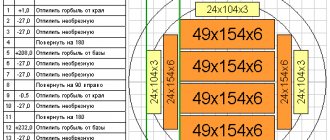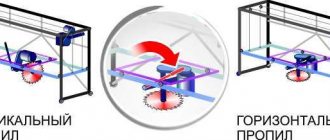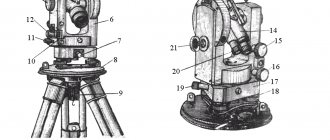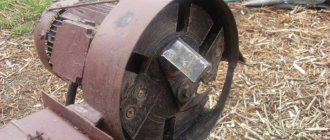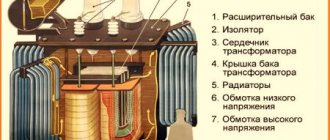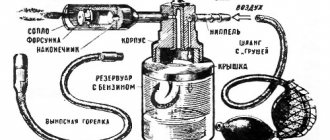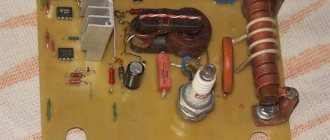Scope of use of the bus sawmill
The installation is intended for sawing logs in the longitudinal direction and for the production of slats, carriages, edged and unedged boards, and wood processing. Thanks to its small size, it is possible to work in small areas. The design copes well with sawing timber.
Sawing logs on a tire sawmill
You can cut timber using a sawing device; high precision allows you to produce millimeter sheets of any size and shape.
Can cut different types of trees such as oak, cherry, apple, aspen, etc.
To build a house, bathhouse, gazebo or small shed, you have to face the problem of wood processing and sawing boards. Or the construction of basic furniture, tables, shelves, benches, etc. The tire sawmill is a real godsend and saves money on which you would have to spend a lot of money.
Stationary woodworking equipment runs on electricity, has a gasoline engine, and can be moved.
Selection of equipment and technology for opening a wood processing shop
Frame machines using garter technology
Sawing of logs is carried out according to the reciprocating principle: the saw frame with a set of saws attached to it moves along guides (rails). Although in world practice garter technology is considered obsolete, in our country frame sawmills are considered the leader in the production of unedged lumber of medium quality. And it cannot be said that this popularity is not deserved.
Frame sawmills have high productivity (2-7 m3/hour), excellent cutting stability, they are unpretentious in maintenance, and do not require highly qualified framers (sawmills). They work well with difficult materials: hard wood, resinous rocks.
- to optimize work (reducing the time for reconfiguring saws, increasing efficiency, the possibility of simultaneous sawing of several logs), it is necessary to sort the saw logs into 10-12 standard diameter sizes;
- most frame sawmills have difficulty coping with logs whose diameter exceeds 70 cm;
- the equipment requires mandatory installation on a multi-ton foundation;
- The cutting thickness is on average 5-6 mm. The consequence is high surface roughness, low geometric accuracy of the finished product, and a large amount of waste (the yield rate of cut material is up to 55%).
Read also: How to make a dryer from a container
Price: new equipment – from 1.1 million rubles; used – from 750,000 rubles.
Frame sawmills are recommended for installation in high-performance sawmills. At small enterprises with an output of less than 15 m3/day, such equipment will be an unjustified investment: the payback period is more than 3 years. The best option if you have independent logging or a large amount of affordable raw materials of medium thickness.
Band saws
Band saw technology is considered the youngest and most progressive - thin cuts and maximum yield coefficients push band saws to the first positions in the ranking of sawmill equipment.
The main operating element is a steel belt with one- or two-sided teeth, which is welded into a ring and attached to 2 rotating drums 0.5-1 m in diameter. The best cutting qualities are demonstrated by belts with specially hardened teeth.
The main advantages of a band sawmill:
- does not require a foundation;
- works well with large diameter logs;
- has high cutting accuracy and small thickness (on average 2.2 mm);
- suitable for cutting hardwood;
- does not require sub-sorting of logs;
- has the highest yield (for edged materials - up to 75%).
Productivity depends on belt size. Farmer-grade machines operate on a narrow belt, 1-5 cm wide, producing up to 5 m3/shift.
Sawmills with a wide belt, the thickness of which is from 5 cm, are capable of processing up to 15 m3/shift.
- mandatory lubrication is required (water in summer, diesel fuel in winter);
- machines with narrow belts do not cut dirty, frozen wood well - the board comes out wavy and requires modification on machines;
- Only tapes with special sharpening are suitable for sawing resinous wood - in regular ones, the teeth “get stuck”;
- saw blades need to be replaced frequently. On average, one good saw, costing 800 rubles, is designed for 10-12 m3 of logs, but after two hours of continuous sawing it must be removed to cool. To ensure two-shift operation of equipment with a narrow belt, at least 100 saws per year will be required! In addition, the sharpener and sawyer must be highly qualified - the slightest inaccuracy threatens to break the tape;
- To carry out repair work, you will need welding equipment (preferably imported). It allows you to extend the “life” of the saw by welding it in places where it breaks.
Price: band sawmill with a narrow band – from 110,000 rubles; with wide – from 350,000 rub.
The market is flooded with offers of band saws with narrow saw blades, but such equipment is recommended only for small businesses or farms with a productivity of up to 5 m3/day.
All the positive qualities of band saw technology are manifested only when using saws with a width of 8 cm or more. Such bands are equipped with stellited wear-resistant teeth that are not afraid of frozen, dirty forests, and resinous wood.
Circular machines
The dissolution of logs into lumber using circular saw technology is carried out on the following machines:
- vertical saws - open/semi-open saw mounted perpendicular to the base;
- coal saws - two saws fixed at an angle of 90 degrees (Fig. below);
- horizontal saws - the saw is fixed parallel to the base. The operation of the machine is reminiscent of band saw technology, only the functions of a toothed band are performed by a circular saw, which is less dull and is replaced only once per shift.
Coal sawing machine
Horizontal sawing machine
- Circular technology has the highest cutting speed: a 6m long log is sawed in 8-14 seconds;
- on such machines there is a good indicator k of the yield suitable for cutting materials using the radial method (for boards - 0.5);
- high quality cutting, strict adherence to the geometry of the lumber (tolerance ± 1 mm);
- good productivity: for edged material - up to 15 m3/shift;
- cope well with hard wood, dirty, resinous logs, since the saws have carbide or stellited teeth;
- cut – individual, no sorting of logs required;
- low equipment costs: 3-4 saws are enough for 2 years of productive work;
- the ability to transport products around the workshop (except for horizontal sawing machines);
- the high cost of not only the equipment itself, but also the servicing machines (the cost of a saw sharpening machine alone is 60-200 thousand rubles);
- highly qualified operators are required - without an experienced sawmill, a circular saw will produce low-quality products with a high amount of waste:
- the cost of one saw is $300-700. Although it is designed for high efficiency (up to 3000 m3 of edged materials), it requires teeth shaping and balancing on a special machine once a week. Sharpening - twice per shift in winter, 1 rub. per shift in summer;
- The average cut thickness is 5.5 mm (with a saw thickness of 4 mm), while the yield rate is about 52%. Thinner saws with a thickness of 3.2-3.6 mm can slightly increase this figure (up to 58%), but they are recommended to be used, again, only if you have a good sawmill.
Price: from 550,000 rub.
Recommended for large sawmill complexes as the first row machines for processing thick gauge (with further dissolving of unedged material on economical band saw machines); for the production of lumber using the radial sawing method.
Popular publications:
The basis for heat preservationBefore you properly insulate the floor in a wooden house, you need to study the diagram...
Plastic or wood? Plastic window with wooden window sill We definitely recommend one or another type of material for manufacturing...
Selection of materials for manufacturing For a multi-tiered book shelf, you need to use thin and light boards. The classic material…
How to make a window sill: materials and methods Before starting work on the manufacture of a window sill, you must carefully take the dimensions...
Components of a bus sawmill
There are two types of tire sawmills; you can build them yourself:
- a saw unit that is moved relative to the wood being processed;
- with wood feeding longitudinally.
Drawing of a tire sawmill
The two types of designs have positive and negative sides. For example, when the machine moves along a log, you need to control it so that the cut is uniform at high speed. When feeding a log, it is more difficult to do this; even if you accidentally push the processing tree, the load on the tire will immediately increase. Subsequently, the chain may jam or the motor may overheat. Plus, such equipment does not have additional wires.
Regardless of the choice of model, it is worth paying attention to the quality of the base. Typically, rails or channels are used for it. And the lower part is equipped with wheels so that the structure can move.
Sawing logs into boards with a chainsaw
Very often there are situations when you need to produce a very small volume of boards or beams for your own needs. Of course, buying machines in this case is absolutely not an option. Having certain knowledge and skills, it is much more profitable to cut logs with your own hands, using an electric or gasoline chain saw. Despite the fact that this work is quite labor-intensive, the result is quite justified.
Most experts believe that a chainsaw is better suited for this purpose. Such equipment has high power and can operate without interruption for a long time. In addition, the operation of a chainsaw does not require electricity, so you can work far from the power supply, for example, right on the plot.
In order to cut a log into boards using a chainsaw, you will also need special tools, such as a mechanism for securing the log, a frame attachment for the chainsaw, and a guide for making the cut. The attachment frame must be attached to the chainsaw bar so that it can be used to adjust the gap between it and the chain. This will make it possible to create boards of different thicknesses. It is worth purchasing a special chain for longitudinal sawing. It has a special tooth sharpening angle. The guide ruler can be made from a metal profile of the required length or a flat, rigid board.
Read also: Operating principle of a float level gauge
Before starting work, you need to remove all the bark and remaining branches from the workpieces, and also carefully inspect the log for various flaws. This way, you can choose the most suitable cutting pattern and, therefore, reduce the amount of possible waste.
If you are longitudinally sawing trunks, you need to make sure that the resulting lumber is of the same density across the entire width. Since the density of wood from the northern part of the log is much higher than from the southern part, the cut is carried out in a plane directed from east to west (or in the reverse order).
The first step is to remove the slabs from two opposite edges of the log. As a result, a double-edged beam will be obtained, which is then cut into boards or other lumber of equal thickness, according to the intended sawing pattern. The final product is an unedged board, from which the edges must then be removed.
Assembling the sawing mechanism in stages
To assemble a tire sawmill yourself, you must follow the correct sequence:
- First you need to make a rectangular frame.
- Afterwards, in the center of the base, you need to place the tire and secure it carefully, because subsequently there will be a constant high load. The tire is secured on both sides.
- An axle is inserted into the hole of the driven sprocket, which prevents the tire from moving in the horizontal direction. To prevent vertical displacement, bearings are placed on the axle on both sides.
- Bushings are put on, and an axle is welded to one side of the frame.
- On the opposite side there is an electric motor and a chain tensioning system using spare parts from a chainsaw.
- The drive drum is attached to the electric motor shaft and secured with a longitudinal key.
- The structure of the tire machine must be centered, carefully checked and secured.
Mechanism of the tire sawmill
It is worth paying attention to the motor mount, because the equipment will vibrate strongly during operation. It is important that the bed is rigid.
Making the base and transferring the structure
Metal frame manufacturing process:
- It is required to weld two U-shaped shapes from metal pipes.
- Connect the forms together at the top using welding or bolts.
- 4 pipes are welded vertically in the center of the frame. A recess is made on each of them, half the thickness of the metal, there should be a distance of 2 cm between them.
- Another 4 tubes, so that their diameter coincides with the outer diameter of the vertical pipes, are welded to the working unit.
- The pipes on the working unit must be placed on the base of the frame.
Sawmill frame drawing
All this ensures the working unit moves in a vertical position, which will be fixed with bolts.
The manufactured unit is installed on a metal frame.
Features of working on a self-made tire sawmill
After all the stages of assembling the tire machine, you can start working.
First you need to secure the log to the sawmill, open the tap on the oil barrel and turn on the engine. Lower the frame using the screw and begin moving the device along the rails.
Do-it-yourself drawing of a tire sawmill
The operation of the sawmill is affected by the thickness of the log, its knotiness, species, and the condition of the wood: dry or fresh. A tire sawmill can handle any type of tree, but the work will be better if fresh wood is used.
Coniferous and deciduous trees can be easily sawed:
- aspen;
- maple;
- alder;
- poplar.
They have soft wood. It is more difficult to work with hard wood species - oak or ash. But the most difficult job is to cut the steamed acacia, because it has very dense and hard wood.
Before starting work, it is recommended to check whether the saw chain is sharpened; the sawing speed depends on this.
The recommended length of the log should be no more than 7 m, and the width should not be more than 40 cm in diameter. The average speed when sawing pine logs 3 m long and 25 cm in diameter is 7 minutes.
If a large construction project is expected, then purchasing or independently manufacturing a tire sawmill will be necessary. This design is an indispensable assistant when processing wood, sawing timber and other work.
Making a sawmill with your own hands
Before starting work on creating a sawmill, you need to decide on the type of feed. You can make it so that the material itself (the log) is movable, or you can make the working part. When choosing a type with material feeding, it is necessary to take into account that the area for placing the mechanism must be twice as large as when feeding a carriage. In addition, it is necessary to provide for high precision in the location of the runners along which the log will move, and their constant cleaning of sawdust.
To make a homemade tire sawmill with carriage feed, the following materials and tools are required.
- Construction drawing.
- Metal corner measuring 50x50 for the subway (see length in the text below).
- Rectangular metal pipe 60x60 for creating a carriage.
- A round metal pipe for securing the power unit.
- Sheet of metal 1 m2, 3-4 mm thick.
- 4 metal wheels with axles.
- Spare parts for the saw (bar, chain, drive sprocket).
- Electric motor.
- Welding machine with electrodes.
- Electric drill and drill set.
- "Bulgarian".
- Marking tool (ruler, chalk or marker).
The length of the angle for the subway is determined according to the following scheme: the length of the future workpiece (log) + the distance from the outer support (wheel) to the edge of the tire, multiplied by 2, + 10 cm of reserve. The dimensions of the tubes are determined by the size of the carriage, which depends on the type of tire used.
Stages of assembling the sawing mechanism
First of all, it is necessary to weld a structure from square pipes that looks like a box that has no walls, bottom or lid. One (bottom) short side of the future carriage should be 10-15 cm longer than the top side in all directions. Wheels are attached to the protruding parts of the pipes.
At the next stage, round pipes are installed on one side, along which the engine platform will move “up and down.” This is necessary to adjust the size of the future lumber.
Then the platform for the engine itself is made: holes for mounting the electric motor are marked on a sheet of iron. Then another plane is welded to the platform, on which the chainsaw tire is directly attached. The axle on which the drive sprocket of the chain is fixed is attached to the same platform. The bar must be fastened in such a way as to maintain the ability to adjust the chain tension. A poorly tensioned chain can break when sawing, and a strongly tensioned one will lead to excessive load on the drive sprocket axle, overheating of the tire, which will lead to its deformation and failure.
The next step involves installing a pulley on the drive sprocket axis and connecting this pulley and the electric motor pulley with a drive belt.
The final step will be to place the power cable on the site and electrically connect the motor to the network.
Since the tire sawmill is equipped with a high-power electric motor, special attention must be paid to protecting the worker from possible electric shock. All connection points must be covered with covers with a seal, the cable must have at least 2 layers of insulation, and be located so as to prevent it from entering the saw operating area.
Installation of the structure on the base
The base of the sawmill, or the subway, is assembled according to the principle of a ladder: two main guides from the corner are laid on any base and connected to each other by transverse connectors. When installing the base, it is necessary to provide for the placement of screws on its crossbars, which will clamp the source material (log). It is clear that without the use of such screws, it will be impossible to secure the log to the base.
The assembled carriage is installed on the base by dry rolling the carriage along its entire length, checking the ease, smoothness and evenness of its movement. The operation of the cable is checked without turning on the engine.
After all checks have been carried out, the sawmill can be put into operation.
